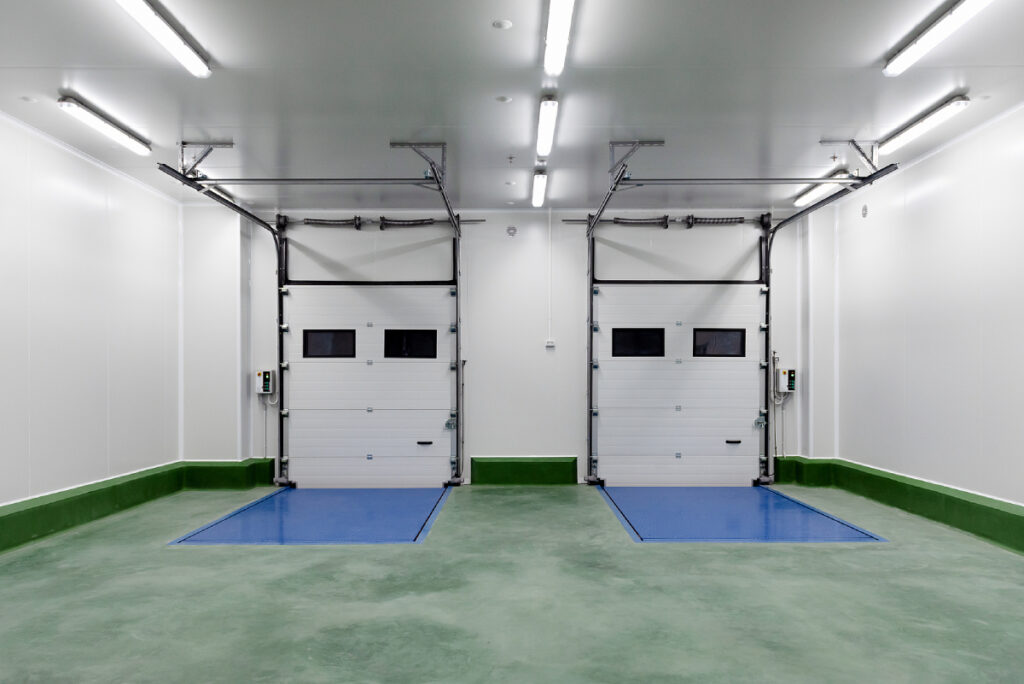
Efficient storage within a walk-in cooler isn’t just about cramming more items into a limited space. It involves strategic planning, clever layout design, and using every inch wisely. Whether you’re running a restaurant, food processing facility, or retail operation, making the most of your cold storage room can improve workflow, cut energy costs, and reduce spoilage.
This guide covers smart, cost-effective layout hacks that can help you optimise your walk-in cooler space without breaking the bank.
1. Vertical Space is Your Friend
Too often, businesses overlook the potential of vertical storage. Installing adjustable shelving systems lets you use the full height of your walk-in cooler. Heavy-duty, corrosion-resistant wire racks are ideal for airflow and durability.
2. Zone Your Cooler for Efficiency
Grouping similar items together based on temperature sensitivity or usage frequency can help reduce door-open times and keep your inventory well organised. For instance, keep frequently accessed items closer to the door and more sensitive or infrequently used products deeper inside.
This approach is inspired by real-world practices observed in customer operations. Many have found that using colour-coded containers or shelf tags helps staff locate items quickly, reducing the time spent inside the cooler. Consistent labelling across racks and bins has also proven effective in minimising confusion during busy periods, contributing to smoother workflows and improved energy efficiency.
3. Use Mobile Racks and Trolleys
Instead of fixed shelving everywhere, integrate a few mobile racks or trolleys into your walk-in cooler. These can be rolled in and out for easy restocking and cleaning. It not only streamlines operations but also allows flexible reorganisation when your inventory changes seasonally.
Some trolleys are designed to fit directly into service areas or kitchens, allowing for seamless cold chain movement and reduced handling time.
4. Opt for Narrower Aisles with Proper Planning
Wide aisles waste valuable space. Safety and accessibility are key, so test layouts to ensure staff can manoeuvre safely even when the cooler is busy. Providing training on traffic flow and best practices in shared cooler spaces also contributes to safer, more efficient use.
5. Don’t Forget the Doors and Corners
Corner shelving or rotating carousel units can make use of awkward spaces.
Additional fold-down trays or pull-out bins installed in corners provide temporary surfaces for sorting or prepping orders without needing extra room.
6. Declutter and Rotate Inventory
No amount of layout adjustment will help if your inventory management is poor. Regular audits and FIFO (First In, First Out) systems help avoid expired stock cluttering space.
Understanding the impact of overstocking on cold room efficiency is crucial, as excess inventory can reduce airflow and increase energy use. Digital inventory systems can assist in tracking expiry dates and quantities so that overstocking doesn’t become an issue. Assign designated areas for excess or seasonal inventory to prevent them from spilling into regular stock zones.
7. Use Space-Saving Containers
Standardised, stackable containers can make a huge difference. Avoid odd-sized boxes or bags that don’t stack well. Transparent containers also allow quicker identification, cutting down search time inside the cooler.
Investing in heavy-duty bins designed for cold environments ensures durability and long-term use. Choose materials that resist cracking at low temperatures.
8. Monitor Airflow
Blocking air vents or overcrowding racks can restrict airflow, leading to uneven cooling and energy inefficiency. Ensure your layout allows unobstructed ventilation to maintain food safety standards and prevent compressor overwork by conducting regular airflow assessments.
9. Leverage Lighting for Better Visibility
Strategically placed LED lighting improves visibility, making it easier to locate items and navigate tight spaces. This also helps reduce the time the cooler door stays open.
Proper lighting placement also discourages staff from rearranging items haphazardly, keeping your layout consistent and functional.
10. Plan for Future Flexibility
As your business grows or seasons change, so will your storage needs. Choose shelving systems and storage solutions that can be easily reconfigured to adapt without major cost.
Modular racking, clip-in shelf adjustments, and mobile units offer long-term versatility. Regularly review your setup to match changing inventory needs.
Conclusion: Stretching Your Cold Storage Budget Wisely
Implementing these layout strategies doesn’t require a major renovation or high-tech investment. With thoughtful organisation, some simple hardware, and regular inventory control, you can drastically improve the functionality of your walk-in cooler.
If you’re aiming to maximise the value and reliability of your walk-in cooler, Cold Chain Refrigeration offers tailored support to ensure your system runs smoothly and efficiently. Whether you’re dealing with inconsistent cooling, looking to improve layout efficiency, or simply want expert advice, our experienced team is here to help you get the best performance out of your cold storage setup—now and into the future.
For more information, contact us today!
